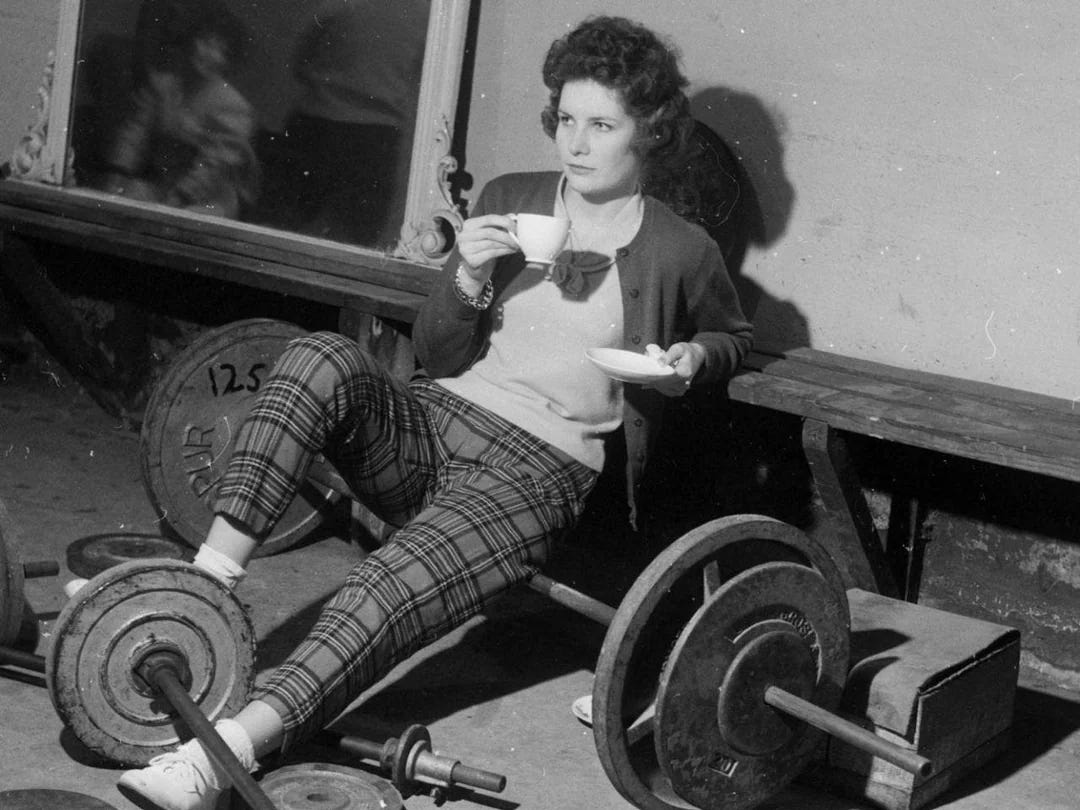The roots of modern strength and conditioning can be deeply traced to the Soviet Union. It’s one thing to take an elite performer and polish them into an athlete but another to develop athetes from young age into olympic champions.
The soviets reinvented the way athletes train for sports. It wasn’t just random workouts, they had training down to a system. Athletes were being trained almost since birth to become world champions and it all began with a broad selection of exercises to build an unshakeable base of physical preparation.
Bodybuilding was outlawed in the Soviet Union. With the exception of underground training being done without the knowledge of the state, most people were training for performance purposes rather than aesthetics.
Feel The Burn
For my clients I often explain that training for body composition is more muscular while trainining for performance is more movement based. This is an important distinction for strength vs hypertrophy training. Although muscle mass helps with strength, your nervous system will be the driver for greater force output.
Understand that strength and hypertrophy can interact synergistically. You don’t want to be small and frail if you want to be strong, you don’t want to be weak if you want to be big. They compliment each other.
How we adjust training to bias the adaptation however can lead to greater results in one over the other.
Strength is Practice
Pavel Tsatsouline was just one coach who brought eastern methods of training to the western world. How we trained in the United States in the 70s and 80s was much different than what our Soviet counterparts did.
Athlete training was still largely shrouded by ancient wives tales and aerobic training was getting all the love from research the last several decades leading up to this time.
“Lifting will make you slow”
“You only need to play your sport”
(none of these things are true)
Just like pitching a baseball or shooting a basket, getting strong takes skill.
Motor patterns take time and practice to develop.
Your body needs to know where to position itself globally but also by each joint to maximally produce force. The nervous system also needs to be trained to strain and produce high force output.
“If you’re training for strength, you want to try and avoid the burn altogether. The burn is your enemy.” - Pavel Tsatsouline
While bodybuilders in the west chased a nasty pump, athletes in the USSR were slinging’ heavy weights, jumping, bounding, and performing all the cool shock methods you can find on YouTube.
There is also a way to work strength and improve your conditioning with a similar style of training (low reps, high sets, full to nearly full recovery). The alternate EMOM can provide both strength and conditioning to round off your training program.
Minimalist Training For Maximalist Results
The workout is simple, pick 2 movements: one for strength and one for conditioning. The kettlebell is one of my favorite tools for this method. The reps for these workouts need to be adjusted based on your fitness level.
Between sets your heart rate should drop back to at least 60%~ or to a point where you can talk in short sentences. If your heart rate is higher than 60% before starting the next EMOM: decrease weight / make the exercise easier or decrease reps.
The workout
Alternating EMOM perform the chin-ups the first minute then swings the next. Repeat until all rounds are complete.
20 Minute Alternate EMOM
1st Minute: Weighted Chin-up x 3
2nd Minute: Kettlebell Swing x 10
“The Kettlebell is an Ancient Russian Weapon Against Weakness”
- Pavel Tsatsouline
20 Min Alteranting EMOM
1st Minute: Front Squat 80% x 1
2nd Minute: Chin-up 25% of max reps
If you can do 12 chin ups, you would do 3 per set here. Round down, so if you can only do 10, then do 2 chin-ups.
Minimalist Squat Training
A1. Back Squat 8 x 3, @ 80-85%, 20X0, 3:00 Rest
B1. Goodmorning 3 x 6, @ 75-80%, 3010, 3:00 Rest
Go home and recover.
The point of this style of training isn’t to leave you panting and heaving, wondering when the taste of blood and stabbing in your lungs will leave you. Again, strength is practice. Fatigue degrades skill, you need to rest.
Another benefit of this training style is strength and power endurance can be improved. Although fatigue is accumulating, you’re still adequately recovered to produce force maximally. This type of training will transfer better to the field of play than simply blasting biceps for sets of 12 all the time.
Bodybuilding / pump style training can still be effective for hypertrophy and certainly has a place in long-term athletic development. However, not every tool is right for the job all the time.
Don’t wash windows with a hammer.
Stay Strong.
Check out Kettlebell Conditioning. Get access to a library of kettlebell and bodyweight training you can do at your own pace.






Great article! Reminds me of something Jim Wendler said after walking around the Arnold expo and watching the WPO powerlifting meet there many years ago. He said everyone there who is strong was jacked, but not everyone who is jacked was strong!
I’ve saved so many workouts of yours. Starting to look like my book list